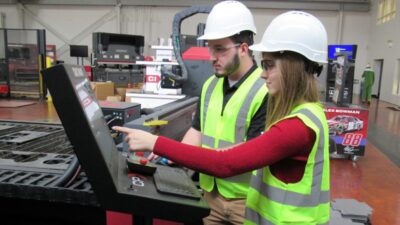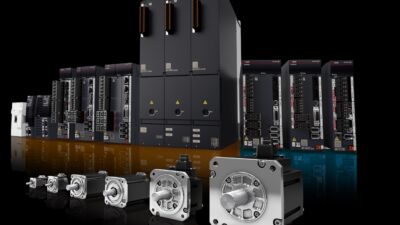At the heart of making machine safety part of sustainable production programs is the belief that corporate investment in environmental and social responsibility strengthens business performance and improves the bottom line. Certainly goodwill is part of the motivation, but there also is a real economic imperative to adopt sustainable production practices.
At the heart of making machine safety part of sustainable production programs is the belief that corporate investment in environmental and social responsibility strengthens business performance and improves the bottom line. Certainly goodwill is part of the motivation, but there also is a real economic imperative to adopt sustainable production practices.
Sustainable production practices offer one of the best long-term solutions to overcoming the rising cost of energy and raw materials, as well managing other operational costs such as worker’s compensation, lost worker productivity, and product liability. In addition, adhering to the safety values inherent in sustainable production ultimately can help a manufacturer increase employee retention and morale, and improve brand reputation.
Bottom line: Safety—along with energy and the environment—is a critical component in the sustainability equation.
Protect your brand and your people
Brand reputation suffers when companies are slow to adopt the values of sustainable production. Consumers increasingly are demanding that manufacturers practice social responsibility in making their products. This includes keeping workers safer, contributing to a healthy environment, and effectively managing product safety through tracking and tracing systems, robust supply chain transparency, and effective recall systems.
Beyond brand reputation, companies have a vested interest in sustaining their organizations and the neighborhoods in which they operate. That is, they are interested in helping keep their workers and communities safer. One way to accomplish this is to leverage high-performance, flexible automation systems with contemporary, integrated safety solutions in manufacturing facilities.
Today’s technology can combine productivity with safe operations. Here, personnel perform maintenance tasks on equipment that features an RFID-coded SensaGuard non-contact safety switch on the machine guard door.
Unfortunately, many of today’s legacy manufacturing applications use dated methods and technologies. Some of these applications were developed with a blind eye toward safety—relying only on the operator and maintenance technician to be alert to hazards. Others were deployed as an afterthought in response to an accident or new industry standard.
A factor contributing to this reactive and separate approach were the limitations of safety technology. It often required machines to come to a full stop and be in a safe state before repair or maintenance could be completed or anytime operator access was needed. Because the downtime associated with the safety event decreased productivity, operators and maintenance personnel often bypassed safety systems to maintain productivity, risking their own well-being in the process. Still other systems were developed with an eye toward safety, but were implemented in a way that negatively impacted productivity; system designers opted for a “trade-off” mentality that resulted in neither safety nor production being fully optimized.
Such risks are no longer acceptable or necessary, thanks to new global standards, technological innovation, and risk management. Today’s safety automation systems, when deployed properly, sustain the best of all worlds — a safer environment for employees, reduced environmental impact, better processes, and optimized productivity.
With the implementation of contemporary safety solutions, manufacturers can allow operators to more safely perform operational tasks while a machine is running and possibly in motion, which helps increase productivity. For example, new safe-speed control technology makes it possible for manufacturers to reduce and monitor the speed of their machines so operators can remove jams and perform other similar maintenance work without completely stopping the machine. This helps improve productivity and saves excess energy necessary to power up a machine, which in turn reduces overall energy consumption.
Product safety
Another key requirement of sustainable production—one that is critical to protecting brand reputation—is the ability of companies to support the safety of their own product lines, including effectively handling product recalls. Recent news headlines citing recalls of prescription drugs, ground beef, vegetables, children’s toys, and other products demonstrate the importance of full supply-chain tracking and traceability.
Using advanced information software, companies can track and record data at every step of the process to pinpoint when and where resources were used, such as raw materials, people, equipment or utilities and the actions taken during each step of production. These systems help automate track-and-trace procedures of product genealogy through the full chain of custody and thereby help manufacturers comply, document, and respond to recalls faster and more efficiently. Ideally, a robust tracking system can identify and lock down affected products before they reach the supply chain, thus helping to eliminate recalls and their associated costs and damage to a company’s reputation.
A good investment
Sustainable production need not be an either/or proposition between social responsibility and profitability. Business leaders who see the big picture understand that sustainable production practices help optimize resources, improve productivity and meet the company’s social responsibility to the community.
In fact, well-designed safety systems deliver production improvements that help justify the cost of implementation. They also help lower the risk of indirect costs that harm a company’s financial performance, such as lost time, damage to reputation, poor employee morale, and strained labor relations. Moreover, companies that embrace sustainability also tend to draw investors, who view clean environmental and safety records as signs of a well-managed company.
Author Information
Marcia Walker is program manager and Dan Hornbeck is safety market development manager at Rockwell Automation.



